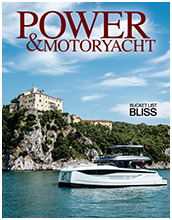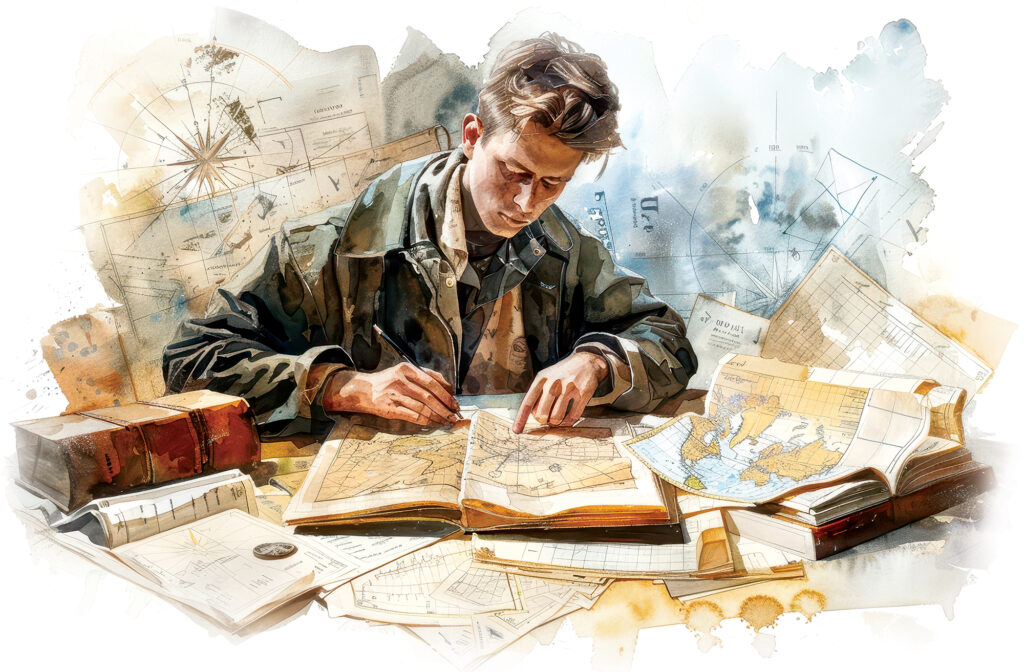Not all explorers wear cloaks or carry sextants. Some wear deck shoes, carry spare impellers, and check the weather twice before hauling anchor. They scan the horizon not for undiscovered continents, but for a harbor simply unknown to them, only motivated by the need to go, to see, to understand.
In the age of GPS satellites and electronic charting, it would be easy to think the great era of exploration is behind us. But for those of us who cruise long distances aboard our boats, the explorer’s spirit is alive and well. We are not thrill-seekers or adrenaline junkies chasing danger for its own sake. We prefer to think of ourselves as thoughtful adventurers, driven by an inner restlessness, a curiosity not only about what lies beyond the next headland, but about what we may discover in ourselves along the way.
What makes someone leave the safety and convenience of a house on land to live aboard a slow-moving boat for months at a time? The answer for us is simple; curiosity is our compass. I’m not referring here to just some casual interest, but the kind of deep curiosity that psychologist Todd Kashdan calls “a hunger for knowledge, novelty, and challenge.”
In our seasonal cruising aboard Liberdade, we rarely set out with every detail of the trip known. We plan carefully—good seamanship demands that, but we leave wide margins for the unknown. Weather changes, mechanical issues arise, or currents don’t cooperate, but with each change, our curiosity reframes the unexpected not as an obstacle, but as part of the experience.
This is where the world of exploration meets the science of curiosity. We know that uncertainty tends to incite fear, but neuroscience tells us the curious mind dampens that fear by calming the amygdala where “fight or flight” live, and engages the prefrontal cortex, where emotions are regulated and decision-making takes place. The curious mind gets a dopamine hit every time it discovers something new, and discovery is what the cruising life is all about for us.
It is no coincidence that the longtime cruisers we’ve met seem unflappable. They have built over time, a mindset where questions become more powerful than fears. “What if we tuck in behind that point instead of pushing on?” “What if we slow down and wait for high tide?” “What if this unexpected detour becomes the best part of the trip?” These are the musings of the curious. And they are what turn our life aboard into a lifelong craft of learning.
It is the mindset of “what if” instead of “what now.” The most resilient cruisers are not those who eliminate risk, but those who make peace with it. Not recklessly, but with an adaptive mindset. When plans fall apart, the explorer’s spirit doesn’t ask, “Why is this happening to me?” It asks, “Well isn’t this interesting—wonder what I can learn here?” Or they think to themselves, “Here’s an opportunity I didn’t see coming.”
This mental flexibility isn’t just philosophical. It shows up in practical ways on the water—in experimenting with new ideas; maybe we try a new docking technique or test a different watch schedule on a long crossing. It’s in how we gather informal field notes, not necessarily in a journal, but in memory; it’s noting where the holding in that cove was best, where currents are swift, or how locals handle that tricky channel. Each decision becomes a data point in our life aboard, and each mistake becomes a lesson, not a failure. In this way, long-distance cruising doesn’t just build boating skills—it builds character.
Modern cruisers have a lot in common with explorers of old: They didn’t know if there would be anything across the sea, but they went anyway. That need to try, that inner pull toward what lies just over the horizon, is still what moves explorer-cruisers today to untie the lines and point the bow out to sea. It is not the destination that matters most; it is the willingness to go despite not knowing what’s ahead. It is the childlike appetite for “what’s next,” which alone fuels the desire and confidence to go.
Cruisers don’t sail into literal blank spaces on the map anymore, there is no more “terra incognita,” but we do venture into personal unknowns, and every trip tests a different part of us. Our patience, our judgment, our ability to remain calm when the autopilot fails or the harbor is too full. There is always in cruising some element of “here be dragons.” And yet we go.
All long-distance cruising is dual-natured. There is the outer voyage, logged in nautical miles and latitudinal lines. And there is the inner one, traced in the soft pencil of memory, reflection, and growth. Cruising is not just about reaching unexplored places; it’s about becoming someone new in the process.
In that sense, we are no different from the inventors and scientists of the past, people who believed deeply that truth and discovery were possible. Historian Anton Howes reminds us that the language of invention and the language of exploration were once the same—“To explore was to create, and to create was to explore.”
In this life aboard we do both. In our peregrinations, we explore remote coves, distant islands, unfamiliar ports. And in the process, we create for ourselves a life that didn’t exist before. We invent solutions to problems, we build resilience. We map a life that can’t be downloaded from anyone else’s chartplotter.
In the end, it isn’t just curiosity that drives those of us who cruise long distances aboard our boats. It is who we have the chance to become by following it. We become people who are comfortable with ambiguity. Who don’t panic in the face of uncertainty. We see change as a classroom, not a courtroom. We have learned how to sit with “I don’t know yet” without rushing for the answer.
And perhaps most importantly, we become people who go. We say yes to the open-ended question of what lies ahead. With each passage, this life aboard renews our commitment to learn, to adapt, and to grow. Far from the well-worn routes is the true domain of the curious—the place where the horizon never gets closer, and the journey never really ends.
This article originally appeared in the October 2025 issue of Power & Motoryacht magazine.










